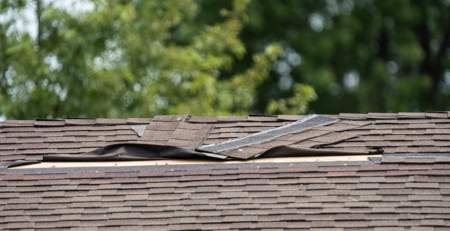Will Your Insurance Cover Roofing Repairs?
As a homeowner, it is crucial to understand the extent of your insurance coverage and how it applies to potential roof repairs.
While your insurance policy may provide some level of coverage for roof damage, it is essential to delve deeper into the specifics to determine whether your repairs will be fully covered.
Factors such as the cause of the damage, the type of policy you have, and the age of your roof all play a role in determining coverage.
In this discussion, as roofing contractors in Toledo, OH, we will explain the different aspects of insurance coverage for roofing repairs, including common types of roof damage covered, steps to take when filing a claim, and alternatives if your insurance policy does not provide the necessary coverage.
So, let’s uncover the mysteries of roofing repairs and find out if your insurance will cover them.
Understanding Your Insurance Policy
Navigating the intricacies of roofing repair coverage becomes significantly easier when you have a thorough understanding of your insurance policy.
It is essential to familiarize yourself with the exclusions in insurance policies to ensure you have the necessary coverage in case of any damage to your roof.
Exclusions can vary depending on your policy type, so it is essential to review your policy carefully.
Additionally, regular roof maintenance plays a significant role in insurance coverage. Insurance providers often require proof of regular maintenance to validate claims for roof repairs.
Proactively maintaining your roof can minimize the risk of damage and increase the likelihood of coverage for any necessary repairs.
In the long run, having a clear comprehension of your insurance policy and committing to regular roof maintenance can shield you from unforeseen expenses.
Factors That Determine Coverage
Several factors are considered when determining roofing repair coverage under an insurance policy. The claim process is an essential factor that determines whether the insurance will cover the cost of repairs.
Policyholders need to initiate a claim with their insurance provider, submitting essential documentation that includes photos, invoices, and a comprehensive explanation of the incurred damage.
Subsequently, the insurance company will scrutinize the claim and evaluate whether the incurred damage qualifies for coverage.
Furthermore, insurance coverage limits are crucial in determining the extent of coverage for roofing repairs.
These limits denote the highest amount that an insurance policy will cover for repairs or replacement.
Policyholders must review their policies carefully to understand their coverage limits and ensure they have adequate protection in case of roofing damage.
Common Types of Roof Damage Covered
Roof damage resulting from adverse weather conditions or accidents is typically covered by insurance policies.
Two common types of roof damage that are often covered by insurance are hail damage and wind damage.
Hail can cause significant damage to a roof, including cracked or broken shingles, dented metal roofs, and punctured membranes. Insurance policies generally cover repairing or replacing these damaged roof materials.
Similarly, wind damage can result in various roof damage, such as lifted or missing shingles, loose flashing, and damaged gutters.
Insurance coverage usually includes the cost of repairing or replacing these wind-damaged components.
It is essential to review your insurance policy to understand the specific coverage for hail and wind damage, as policy terms and conditions may vary.
Steps to Take When Filing a Claim
When filing a claim for insurance coverage for roofing repairs, several important steps should be followed.
The filing process typically involves notifying your insurance company immediately after the damage occurs.
It is crucial to provide accurate and detailed information about the damage, including the cause, date, and extent of the problem. In addition, documentation is essential to support your claim.
This might encompass photographs or videos showcasing the damage, estimates from certified contractors, and pertinent invoices or receipts.
It is also recommended to keep a record of any communication with your insurance company throughout the process.
By following these steps and providing the necessary documentation, you can increase the chances of a successful claim for insurance coverage for roofing repairs.
Alternatives if Your Insurance Does Not Cover Repairs
If your insurance does not cover the necessary repairs to your roof, alternative options are available to consider. These alternatives include:
– Roofing financing: You can explore financing options offered by a good roofer or financial institutions to cover the cost of repairs. This may involve taking out a loan or setting up a payment plan.
– DIY roofing repairs: If you possess the required skills and expertise, you have the option to undertake roof repairs on your own. However, it’s important to note that DIY repairs may not be covered by insurance in case of any further damage or accidents.
– Seeking assistance from local organizations: Some local organizations or non-profit groups may offer assistance or resources for homeowners needing roof repairs. It’s worth researching and reaching out to see if any help is available in your area.
– Applying for government grants or loans: Depending on your location and circumstances, government programs may offer financial assistance for roof repairs. Check with your local government or housing agency to see if you qualify for grants or loans.
Remember to thoroughly research and consider the pros and cons of each alternative before making a decision.










